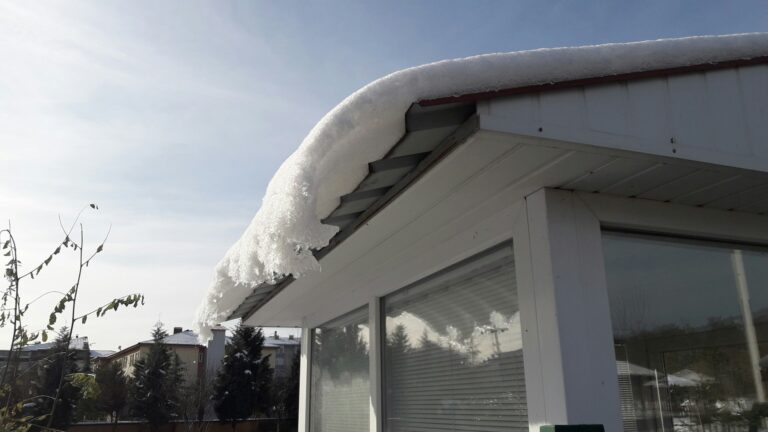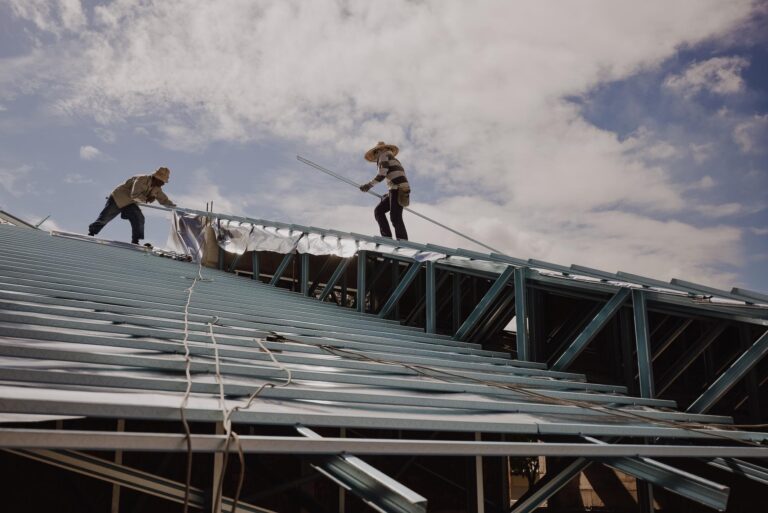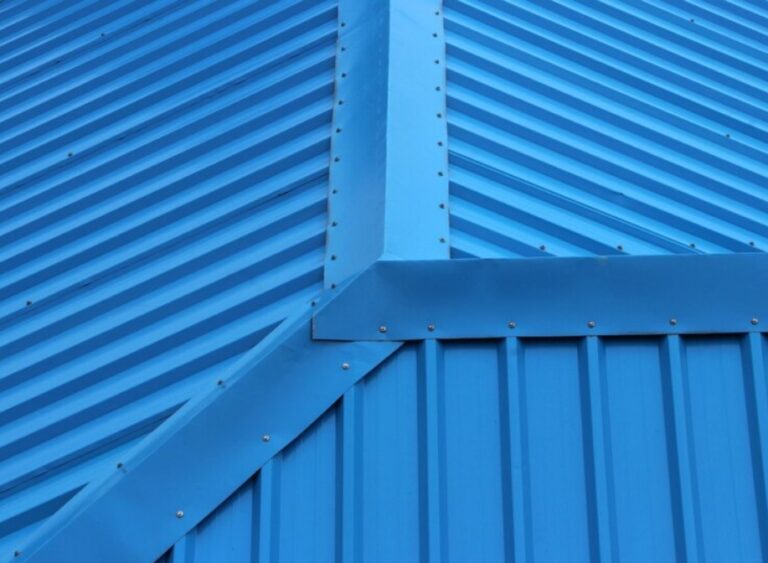Metal siding is built to last, but hot weather can bring out some surface issues that frustrate property owners, like oil canning. This term describes visible waviness or ripples in the flat areas of metal panels, and while it’s mostly cosmetic, it can change how your building looks and even raise concerns about how well the siding is holding up. During the heat of summer, metal expands quite a bit, which can make oil canning worse or bring it out in areas where it wasn’t noticeable before.
It’s easier to prevent oil canning than it is to fix it after it becomes a problem. By knowing what causes it and how to avoid it, especially during hotter months, you’re already a step ahead. Whether you’re planning a new build or managing siding you’ve had for years, addressing this early helps keep things looking great and performing well through every season.
Understanding Oil Canning and Its Effects on Vertical Siding
Oil canning tends to show up as ripples or waves in metal siding, especially in flat or wide sections of panels. These distortions don’t usually mean the metal is failing, but they definitely affect how your siding looks. It’s easy to assume the metal is warping or damaged, but it’s usually just reacting to internal stresses or outside temperatures, both of which push and pull on the surface.
With vertical metal siding panels, oil canning often becomes more noticeable because the wall surface runs high and long without breaks. These uninterrupted lines of metal expand more during hot days, so any internal stress stored in the panel shows up as visible rippling. While you can’t fully control how metal reacts to heat, you can manage how it’s installed and supported.
Here are some of the most common causes of oil canning in metal siding:
– Thermal expansion: Heat causes the metal to stretch slightly. If there isn’t enough room for it to expand, it pushes against itself and shows signs of stress.
– Incorrect fastening: Fasteners that are too tight or placed inconsistently apply pressure that warps the panel.
– Uneven substrate: If the surface behind the siding isn’t level, it creates places where the panel is forced to flex.
– Panel thickness or width: Thinner or wider panels are more likely to show waviness under pressure or heat.
– Improper handling during installation: Bowing or bending during setup can weaken the structure of the panel before it’s even attached.
Addressing these issues early, either during the design phase or when making repairs, helps stop the problem before it starts. This is especially important for longer panels and areas prone to heat.
Installation Methods That Reduce Oil Canning
The way siding is installed makes a big difference when it comes to avoiding oil canning. Even good-quality panels can show signs of stress if they aren’t put up correctly. Paying close attention to spacing, alignment, fastening, and the materials used underneath creates a solid foundation for clean-looking siding that handles heat better.
Here are a few best practices that help prevent oil canning:
1. Use a level and smooth substrate: Start with a completely flat surface. Plywood or other backing materials should lie flush without dips or gaps. Any unevenness will translate through the metal once it’s attached.
2. Leave space for movement: Don’t fasten the panels too tightly. Whether it’s screws or clips, each piece should have enough breathing room to expand in the heat. Floating systems or slotted fasteners can help.
3. Stick to proper fastener alignment: Fasteners should be evenly spaced and consistent across the surface. Uneven tension causes the metal to flex more in certain spots.
4. Consider panel design carefully: Some textures or light striations built into the panel can help hide minor oil canning. Ask about design options that naturally minimize the effect.
5. Avoid overhandling panels: Bending or twisting a panel during installation weakens its form, which can make it more likely to distort when heated.
Following these steps helps keep everything tight enough to stay in place but loose enough to allow for normal movement. That balance matters even more when temperatures start to rise.
Regular Maintenance Tips That Make a Difference
Once your siding is installed the right way, the next step is keeping it in top condition over time. Oil canning can still show up later if something shifts or loosens, so seasonal upkeep helps you stay ahead of it.
Kick off your maintenance with a walk-around during warmer months. Summer is when heat-related distortion is most likely to show up, so it’s a great time to check for problem areas. Keep an eye on flat sections, seams, and edge connections where stress can build up.
Here are a few maintenance steps that help:
– Look for loose or overdriven fasteners and replace them as needed.
– Check panels for uneven surfaces or pressure spots.
– Clean the siding regularly to remove dirt, which can trap heat and mask small ripples.
– Make quick repairs to minor bends or lifted sections before they spread.
During cleaning, avoid abrasive tools or pressure washers that reach too close to the siding. A soft brush and mild soap with water keep things clean without damaging the surface or finish.
Maintenance helps extend the life of your siding. Even if everything went perfectly during installation, things can shift with age or weather. Staying ahead of it reduces surprises and keeps your building looking sharp.
When It’s Time to Call in the Pros
Even with a good install and regular care, some panels will still show oil canning eventually. This is especially true for older buildings or previous jobs that skipped the finer points of prep and layout. If the waves are widespread or showing up fast, it might be time to bring in expert eyes.
An experienced crew knows how to spot the underlying issues and fix them without tearing everything down. Whether it’s adjusting fasteners or replacing panels, they have the tools and training to handle problems quickly and safely.
Things professionals often check include:
– Whether fastening patterns are allowing for enough movement in the heat
– If the substrate below has shifted or warped
– Panel designs that might highlight rippling more than others
– Any deeper structure issues hiding under visual changes
Having someone skilled take a look means better fixes and fewer headaches over time. A clean repair or slight redesign may be all it takes to restore your siding. And in cases where replacement is better, a good team will make the process easier and cleaner.
For hot climates or surfaces that stay in full sun, expert solutions can make a real difference in how your siding holds up.
Heat-Proof Tactics for Cleaner Siding
Summer brings high temps, and your metal siding has to respond. Planning for heat before, during, and after installation helps reduce oil canning and makes upkeep much easier.
Here are a few warm-weather tips that go hand-in-hand with installation and maintenance:
– Choose light-colored panels to reflect sunlight and reduce surface heat.
– Add shade structures where you can to create cooler wall zones.
– Keep wall vents clear and active so heat can escape from behind the siding.
– Avoid stacking things like bricks, mulch, or machinery near siding, which can raise local temps.
– Schedule summer inspections once high heat hits its peak.
A little prep ahead of time is what helps your siding keep its shape later. Warmth affects metal on a surface level, but staying aware of how it builds up lets you work around it instead of fighting it.
If oil canning is already starting to spread, this is where to begin adjusting how your property manages heat.
A Smoother Look Starts with Smart Choices
Stopping oil canning early is all about small steps, timed right. Picking the right type of panel, fastening things with room to move, checking details as the weather warms up, and getting skilled help before things get out of hand all help keep your metal siding smooth and strong.
This kind of care pays off. You get better looks, better function, and a surface that handles every season with less effort. Long hot summers are tough on structures, but with the right prep and a maintenance mindset, your siding doesn’t have to show it. Keeping it smooth from the start is the best way to keep it that way.
For issues with oil canning or to ensure your siding maintains its sleek look during hotter months, consider exploring our installation guides for vertical metal siding panels. When it’s time for a professional touch or comprehensive solutions, Acme Sheet Metals Inc is here to offer support and expertise



